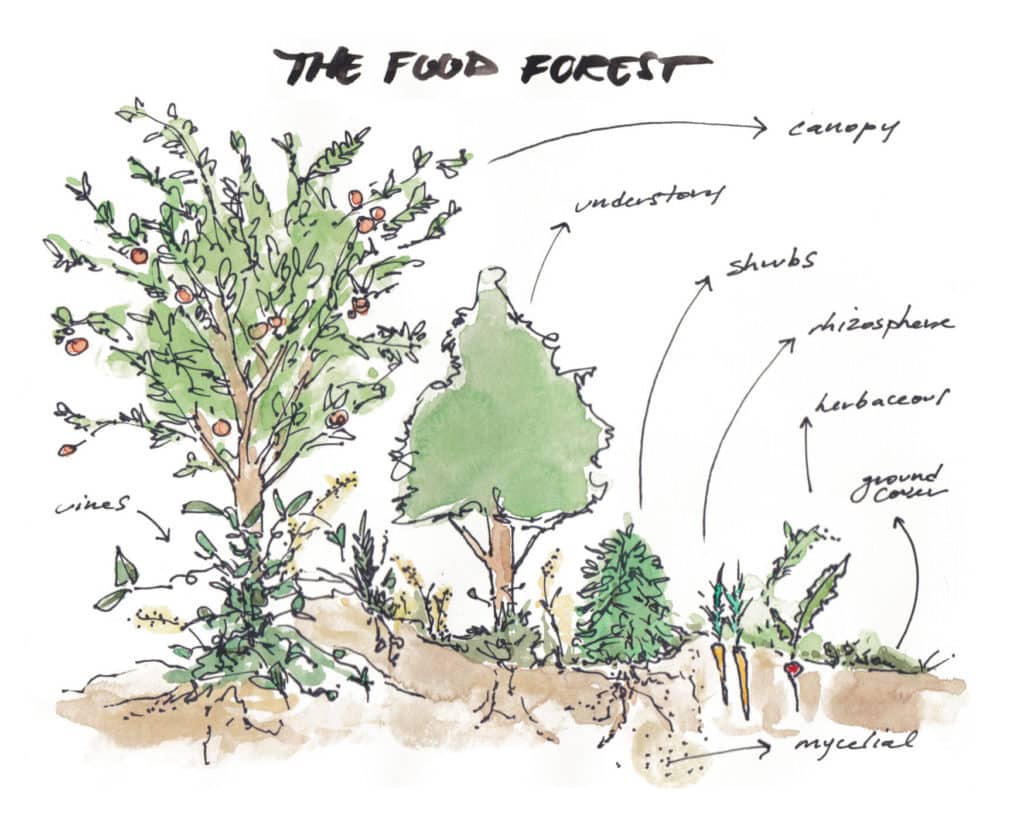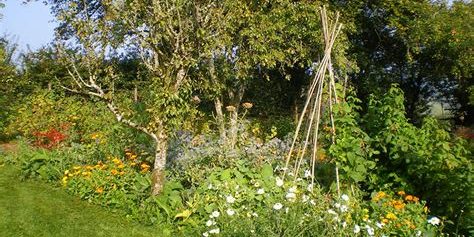Today, it’s more important than ever that we do what we can to be more sustainable. A simple and effective way of doing that is with a forest garden, which not only helps us grow food, but also helps the ecosystem by creating a more natural and regenerative environment.
In this post, we’ll explain what forest gardening is, what the advantages are and how you can create your own.
What is forest gardening?
A forest garden, also known as an edible forest, is a way to grow food that mimics how food grows at the edge of a forest to take advantage of companion planting, so plants use each other to thrive. It’s a low-maintenance, high-yield approach to growing food that anyone can do.
What are the benefits of forest gardening?
If you’re keen to grow food at home but don’t have the time or energy to dedicate to something time-consuming, forest gardening has so many benefits that make it a great option.
- They provide you with sustainable food
- They provide shelter and food to insects and wildlife
- They’re great for the local ecosystem
- They’re guided by nature so are self-sustaining
- They’re resilient, with plants supporting each other to survive
- They provide wonderful, low-maintenance green spaces
- They offer the potential of a small side income
Can anyone do forest gardening?
So long as you have a small amount of land you can use for planting trees, plants and bushes, you can have a forest garden. You don’t need to have any prior experience and you don’t need to dedicate much time, energy and money to maintaining it.
What are the seven layers of a forest garden?
There are seven main layers to a forest garden, which are:
- Tall trees and canopies
- Small trees and large shrubbery
- Shrubs
- Herbaceous
- Ground cover
- Underground root
- Climbers and vines
Some experts, such as GroCycle, also consider there to be an eighth layer, which is mushrooms and other fungi – something we definitely agree with.
Don’t be put off by the first two layers. If you don’t have room for tall trees or large shrubs and can’t afford space for any kind of canopy, that doesn’t matter. You can still make forest gardening work for you.

Image credit: https://www.gardencityharvest.org/the-real-dirt-garden-city-harvest-blog/2020/12/26/what-is-a-food-forest
How to create your own forest garden
Creating your own forest garden doesn’t require a whole lot of gardening knowledge. Just a little bit of space, an idea as to what you want to achieve and a little dedication to putting it together. Then, you can let it run – literally – wild.
Step 1: Choose the type of forest garden you want
First up, think about what type of forest garden you’d like and what you want to get out of it. Three common types are:
- Savanna, which are great for growing herbs, fruit and nuts
- Woodland, which allows for a wide variety of plants
- Orchard, with trees planted in rows and accompanied by other plants
Step 2: Design the infrastructure
Next, you need to make sure your forest garden has everything it’ll need to be self-sustaining. This includes water, such as irrigation or water tanks and structures for plants and animals. If you plan on eating the food you grow, you’ll also need to ensure you have access to allow you to get to it without disturbing it.
Step 3: Choose the plants you want to include
Considering the seven (or eight) layers of a forest garden, it’s time to think about the plants you want to include in your forest garden to ensure it’s self-sustaining. This includes:
- Edible plants, such as herbs, fruit, vegetables and nuts
- Plants that provide nutrients for the soil
- Plants with deep roots
- Tall plants to provide shade and capture the sun
- Climbers
- Groundcovers to capture moisture
- Protectors to look after the plants
There are thousands of options out there, so make sure you do your research and include plants that fit with each of the seven layers.
Step 4: Create your guilds
This is the most important step, so make sure it’s not one you overlook. Choose your plant guilds so they can work together to create a self-sustaining environment. You want to ensure your plants work together to support each other, not fight for dominance. Without a guild, a forest garden simply cannot flourish.
Step 5: Start planting your forest garden
When the time comes for planting, you’ll need to start from the top and work your way down. That means, plant your trees first, as these are the focal points of your forest garden. If you’re planting multiple trees, make sure they’re not planted too close together so they don’t fight for nutrients.
Smaller trees and bushes can then be planted around the fruit and nut trees, making sure there’s space for access. You can then focus on the ground layer, such as herbs and vegetables.
Make sure you create a map so you can log which plants are where. As your forest garden grows it makes for a great reference guide so you can keep track of where everything is – which of course, should spread if you let it do its own thing.
Step 6: Maintain and harvest your forest garden
A forest garden is most effective when you let it do its own thing, which is what makes it such a fabulous addition to your garden. The only thing you need to do is enjoy the fruits of your labour – literally. When the time comes, pick your fruit, harvest your vegetables and enjoy – just remember to leave some for resident and visiting wildlife.
Get involved with community gardening
To learn more about forest gardens, or get stuck in with our sustainable community garden projects, get in touch today.
Sources:
https://www.agroforestry.co.uk/about-agroforestry/forest-gardening/
https://www.permaculture.org.uk/practical-solutions/forest-gardens








